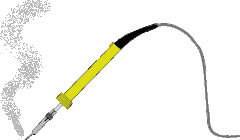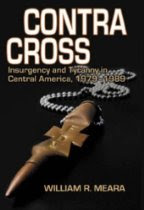Podcasting since 2005! Listen to Latest SolderSmoke
Friday, December 31, 2021
Troubleshooting Apollo: 23 MHz Crystals in a NASA Ground Receiver
Thursday, December 30, 2021
McCoy SSB Crystal Filters (1963) -- But Apparently NOT the Real (Lew) McCoy
Wednesday, December 29, 2021
My Kind of Chip: A Homebrew Discrete 555 Timer Built on Wooden Boards (video)
I know we could do something similar with the NE602 or the LM386. But probably not with an Arduino microcontroller or an Si5351. And that says something about understanding and complexity.
Thanks Radraksha. And thanks to Hack-A-Day for alerting us to this: https://hackaday.com/2021/12/20/all-hail-your-new-giant-555-timer-overlord/#more-512230
Tuesday, December 28, 2021
How to Fix the Spur Problem in my 17 Meter SSB Transmitter?
In the 2004 QST article I discuss a problem I had with "spotting" or "netting." This is something of a lost art, something that you had to do back in the pre-transceiver days, when running a separate transmitter and receiver. This was how you got the transmitter on the receiver's frequency. Essentially you would turn on the carrier oscillator and the VFO and let a little signal get out, enough to allow you to tune the VFO until you heard zero beat on the receiver. My problem was that around one particular frequency, I would hear several zero-beats. This made netting the receiver and the transmitter hard to do.
Important note: This is really just a problem with the "netting" or "spotting" procedure -- the problematic spur does not show up in any significant way in the output of the transmitter. I can't see it on my TinySA. But it is strong enough to be heard in the unmuted receiver sitting right next to the transmitter. And that creates the netting problem.
In the QST article, I said that I noticed that the problem seemed to be centered around 18.116 MHz. As I approached this frequency, the tones -- desired and unwanted -- seemed to converge. That was an important clue. In the article I said I thought that I could eliminate the problem with just one trimmer cap to ground in the carrier oscillator, but looking back I don't think that this really fixed the problem.
I recently took a fresh look at it. Exactly which frequencies were causing the unwanted signals that appeared in my receiver?
I used an Excel Spread sheet to find the culprits.
Monday, December 27, 2021
A Christmas Story: Mike AA1TJ Builds Receiver for 486 kHz, Listens to Fessenden Commemoration (Audio)
True to form, I began scratch-assembling my receiver yesterday afternoon just as Brian went on the air. Then again, a two-transistor regenerative radio for 486kHz isn't exactly rocket science. In any case, I was up and listening inside of a half hour.
What did I hear? Static. Just static. As a sanity test I quickly tuned down to 371KHz to find my favorite non-directional beacon, "GW," beaming in loud and clear from Kuujjuarakip.
Kuujjuarakip?
Kuujjuarakip is a tiny settlement of mostly Inuit and Cree inhabitants located up on Hudson Bay. The villages are primarily accessible by air and water so a robust radio beacon is an obvious necessity.
Satisfied that my receiver was working properly, I re-tuned to 486kHz. Back to static. On the bright side, at least there were no commercials. I continued listening intently until Vic called me to dinner. After the dishes were done I slipped back down to my underground radio shack for one last try.
I heard it right away. Beneath the static I heard a weak, out-of-tune, solo violin playing, "Oh, Holy Night." The signal strength varied wildly with ionospheric propagation. When the signal finally climbed high enough above the noise I ripped out the bipolar transistor audio amplifier stage, connecting my headphones directly to the junction field effect transistor detector output terminals. Of course the audio was far weaker now, yet I could easily follow the tune until it eventually faded away. Not bad for an estimated 15 watt ERP AM signal from a distance of 920km. And on 486kHz, no less, just a hop-skip-and a jump from the old 500kHz Maritime CW band; where countless ship radio operators went to send their last SOS.
Returning to the house, I emailed my reception report and included a short recording that I had made of it. Brian replied just after midnight; apparently, equally as stoked
"Yours’ is the best DX ever given your regen RX! Way to go! I just love it."
He went on to tell me that he was born and raised in Vermont, but he'd been working as a radio scientist down in Virginia since 1990. Told me his heart was still here in the Green Mountains and he was touched to learn his meager signal had found its way back there on Christmas Eve. All in all, a night to remember.
If you're still with me I hope you'll listen to the short NPR story in the provided link. It originally aired on the supposed 100th anniversary of this event. It's not just about radio history. It's about belief, memory and the myths we lug around in our heads. I thought it was well done.
Cheers,
Mike
Saturday, December 25, 2021
A Nice Christmas Gift Out of French Guiana -- The Launch of the James Webb Space Telescope
The (Real) Solar Flare of August 1972 in Cixin Liu's Science Fiction
A view of McMath Region 11976 from the Paris Observatory early on 4 August 1972.
I have a vivid memory of seeing -- as a kid -- Aurora from our home near New York City. Eric Carlsen, my childhood friend and colleague from the Waters Edge Rocket Research Society, told me his mom had similar memories. A while back I did some Googling and concluded that it had to have been the monster solar flare of August 1972:
https://soldersmoke.blogspot.com/2009/09/carrington-flares-aurora-where-were-you.html
That blog post got about eight comments, mostly from other folks with similar memories -- they apparently were led to my blog by the same kind of memory-based Googling that I had done.
This year, on Christmas Eve, Elisa and I were flying home from the Dominican Republic. I was reading (on my phone) "To Hold Up the Sky," an anthology of Cixin Liu's science fiction short-stories. I'd read his excellent "Three body Problem" in the Dominican Republic back in December 2017. His work is usually "hard" sic-fi, with a strong connection to real physics.
One of the short stories in the anthology is entitled "Full Spectrum Barrage Jamming." Wow, I thought, that one is really promises to be very interesting for a radio amateur. I turned out that it was more interesting than I expected.
I won't spoil the story for you. Suffice it to say that Cixin Liu makes reference to the same August 1972 solar flare that I remember from my childhood, and discusses its effect on radio propagation. It was really kind of eerie to be in that plane, flying over the Bahamas, reading Chi-Fi on my I-phone, and seeing the author reference that memorable event from 1972. TRGHS.
There were plans to turn this story into a movie: https://www.yicaiglobal.com/news/wandering-earth-producer-to-film-another-liu-cixin-novel
Here is an excellent article describing what happened back in 1972: https://room.eu.com/article/lessons-from-the-sun. The August 1972 flare was so strong that it caused U.S. Navy anti-ship mines to explode in Haiphong harbor in Vietnam.
Saturday, December 18, 2021
On 17 meter CW from Santo Domingo with a uBITX
The fishing pole worked well, but I operated with fear that it would fall or that the neighbors would complain). Today I got on 17 CW with the uBITX (more power than the SST), put it on 17 CW and promptly worked W4A, a special events station commemorating E. Howard Armstrong. Turns out that today is Armstrong's birthday. TRGHS.
On the Reverse Beacon Network my CQs were heard by KO7SS in Arizona (very cool skimmer station at 8100 feet!) and by W2NAF (interesting operations in Antarctica, Svalbard and Virginia Tech).
Thursday, December 16, 2021
Tuesday, December 14, 2021
Sunday, December 12, 2021
Hack-a-Day: Has DIY become Click-and-Buy?
https://hackaday.com/2021/12/11/has-diy-become-click-and-buy/
Friday, December 10, 2021
The Lamakaan Annual Radio Convention Starts Today!
Here's a time zone converter: https://www.timeanddate.com/worldclock/converter.html?iso=20211211T043000&p1=505&p2=250&p3=137
Here is the Lamakaan Club's YouTube Live Channel. https://www.youtube.com/watch?v=cRznKwGgvDo
I don't know how we might be able to watch or listen via the QO100 satellite. The U.S. is not in the footprint of this bird. But there is a good WEBSDR receiver run by BATC and AMSAT DL: https://eshail.batc.org.uk/
Where is Sunspot Cycle 25?
Their Solar Cycle Progression page is up-to-date. With the slider below each chart you can go back as far as 1750. Check out Cycle 19. I was born near the peak (TRGHS). Pete was on the air during that cycle. Cycle 23 also looked pretty good. I was out in the Azores then (2000-2003) -- no wonder I could work VK and ZL with a 5 watt DSB rig.
I like the little solar conditions widget that has appeared in the left hand column of this page, and I am grateful to the provider, but the widget just doesn't update regularly. So I think I'm going to switch to a link from the Space Weather Prediction Center that shows the numbers we really need: Solar Flux Index (SFI), Sunspot Number (SN), A index, K index. (Please let me know what you think about this change.)
Here is the link to the Solar Cycle Progression Charts (be sure to use the sliders):
Thursday, December 9, 2021
Bluetooth, Winston Churchill, The Speed of Light, and a 1938 Zenith Receiver
Hello Bill -
Wednesday, December 8, 2021
Barrie Gilbert and Tinkering, Surplus, and the Visceral Experience of Electronics
From https://www.edn.com/analog-back-to-the-future-part-two/ :
"Gilbert believes that childhood hardships—including at age three losing his father in World War II, leaving his mother and three other children penniless—force one to be resourceful. Before and during his teenage years, he had access to a plethora of inexpensive military surplus gear which greatly helped to make him inventive. Gilbert laments that today's aspiring engineers are lacking the visceral experience of handling and hefting large coils and tuning capacitors, transformers and vacuum tubes, and such. Today’s surplus circuit boards are all but useless as a source of inspiration, or even “spare parts” to tinker with."
-----------------------------
A really wonderful autobiography by Barrie Gilbert starts on page 7 of this page: https://hephaestusaudio.com/media/2009/06/the-gears-of-genius.pdf
Tuesday, December 7, 2021
Junk Box Sideband from the Azores (2004 QST Article)
Monday, December 6, 2021
Early Radio in New Zealand, and "The Knack"
"The gnawing discontent..." That is what Jean Shepherd had when he couldn't get his Heising Modulator to work properly. We've all been there.
The last line in the quote from DeSoto's book speaks to one of the major themes of this blog and of the SolderSmoke podcast: the way in which people all around the world got interested in radio in much the same way. So many of us, all around the world, often at age 13 or 14, suddenly got interested in radio. We all had (and have!) "The Knack." This is really very nice -- it is something that we have in common, something that pulls us together.
Sunday, December 5, 2021
Jack NG2E's Winter SOTA Marathon in the Shenandoah
Our friend Jack NG2E is a homebrewer. He is also a Summits-On-The-Air guy. He does much of his SOTA operations along Skyline Drive in the Shenandoah National Park. Jack's Story Map method of documenting this SOTA trip is very cool.
Elisa and I are frequent visitors to this amazing park. Both my kids went to college in the Shenandoah valley, and the park starts just one hour by car west of us. It is a beautiful place. The Appalachian Trail runs through the park; we have crossed paths with "through hikers" who are walking from Maine to Georgia. We have also met up with more than one Black Bear in the park (see below). My son Billy and I launched our Green Hornet rocket from a farm in the Shenandoah valley: https://soldersmoke.blogspot.com/2017/05/still-photos-and-slow-motion-video-from.html
I really like Jack's use of both HF and 2 meter FM. This makes me think that I should blow the dust off my Baofeng HT and bring it out to the Shenandoah next time we visit. Jack's 20 meter CW contact with Christian F4WBN in the Pyrenees added a nice element of transatlantic mountain symmetry.
Check out Jack's Shenandoah Story Map:
https://storymaps.arcgis.com/stories/c9ff4a13eca24b37bc9dcda0d2dce989
Here's another story map from a SOTA trip into the Adirondacks with info on his gear:
https://storymaps.arcgis.com/stories/594ca069a27147c1a8d8b79dc1513a72
I know that Jack wants to include a homebrew rig in his SOTA operations. That would significantly add to the already very high level of operational coolness. Perhaps Colin M1BUU or Paul VK3HN could provide some suggestions or encouragement in this area.
Thanks Jack. Happy trails. Regards to the bears!
Saturday, December 4, 2021
Dean's Supercharged, 16-Watt, Furlough 2040, Simple SSB Rig
A Great Morning on the Old Military Radio Net: AB9MQ's Central Electronics 20A, W3EMD's Dynamotor, WU2D
I usually try to listen in on the Old Military Radio Net on Saturday mornings (3885 kc). Lately I listen with my Mate for the Mighty Midget receiver.
This morning's session was especially good. For me the highlight was when Masa AB9MQ called in from Normal, Illinois using his Central Electronics 20A (see below). That was one of the earliest SSB rigs. A phasing rig, it also ran AM (which was what Masa was using this morning). He had it paired up with a Central Electronics 458 VFO. You folks really need to check out Masa's QRZ.com page:
Buzz W3EMD called in from Rhinebeck, NY. I could hear his dynamotor in the background. Buzz said hello to Masa in Japanese. FB.
Always great to hear Mike WU2D.
Friday, December 3, 2021
Alan Wolke W2AEW: YouTube Silver Play Button Award, and ARRL Hudson Division 2020 Technical Achievement Award
Thursday, December 2, 2021
Peter Parker VK3YE Inducted Into QRP Hall of Fame
Thanks to VK3HN for alerting me to this.
Wednesday, December 1, 2021
KI4IO in India and Nepal, and Discrete Homebrew Gilbert Cells
While in India I was licensed at VU2LHO and worked a lot of US hams with a 135' flat-top and open-wire feed. I had the antenna strung between two bamboo towers atop the embassy housing 2nd-story roof-top. I also put up a 3/8 wave vertical on the roof for 10 meters. That little antenna had 110 radials stapled into the roof screen and worked very well! The rig was a HW-101. I was in Kathmandu, Nepal from early 1980 to late 1982. I could not obtain a license there, but became good friends with Father Moran, 9N1MM, and would often spend time up at his place putting his Drake station on CW. Pretty cool being real DX! Back in the states in late 1982.
Tuesday, November 30, 2021
Putting a Barebones Superhet on 17 Meters with an NE602 Converter (Video)
Sunday, November 28, 2021
How To Understand the NE-602 and the Gilbert Cell Mixer
Saturday, November 27, 2021
The Galway Radio Experimenters Club
Wednesday, November 24, 2021
Gloria -- A Netflix Series about a Shortwave Broadcast Station in Portugal
Rarely if ever will we come across a high quality NETFLIX series built around a shortwave broadcast transmitter. But that is what we have in Gloria. It is really good. We were especially interested in it because we lived in Portugal for three years. In addition to all the intrigue and drama you will catch glimpses of broadcast antennas, big transmitting tubes, and one out-of-focus shot of what appears to be a Hallicrafters receiver (SX-42?)
More info here:
Here's the NETFLIX link:
https://www.netflix.com/title/81073977
Thanks to Thomas K4SWL of SWLing Post for the heads up.
Tuesday, November 23, 2021
Jagadish Chandra Bose
Jagadish Chandra Bose

































































